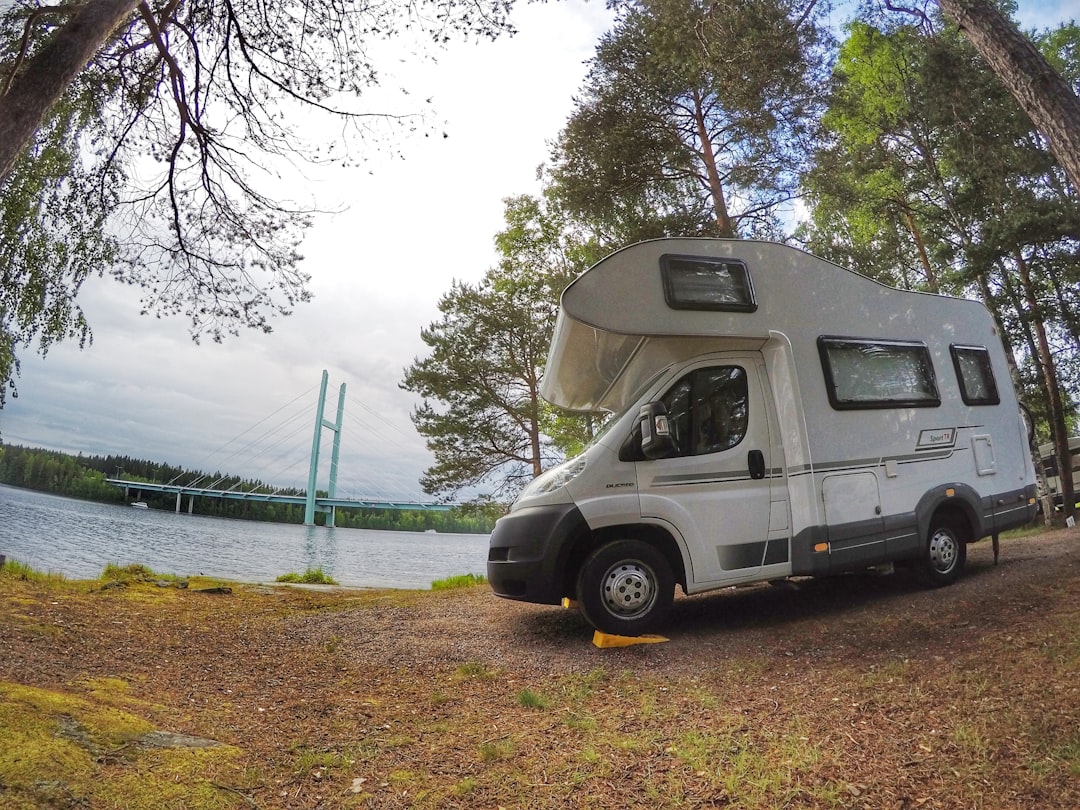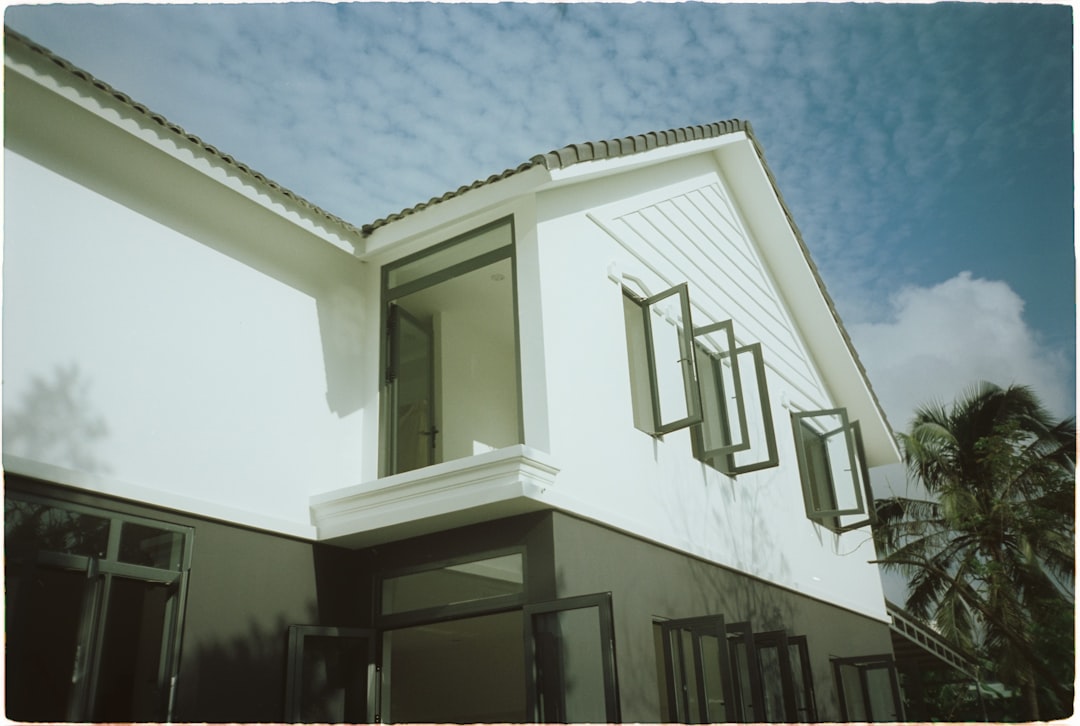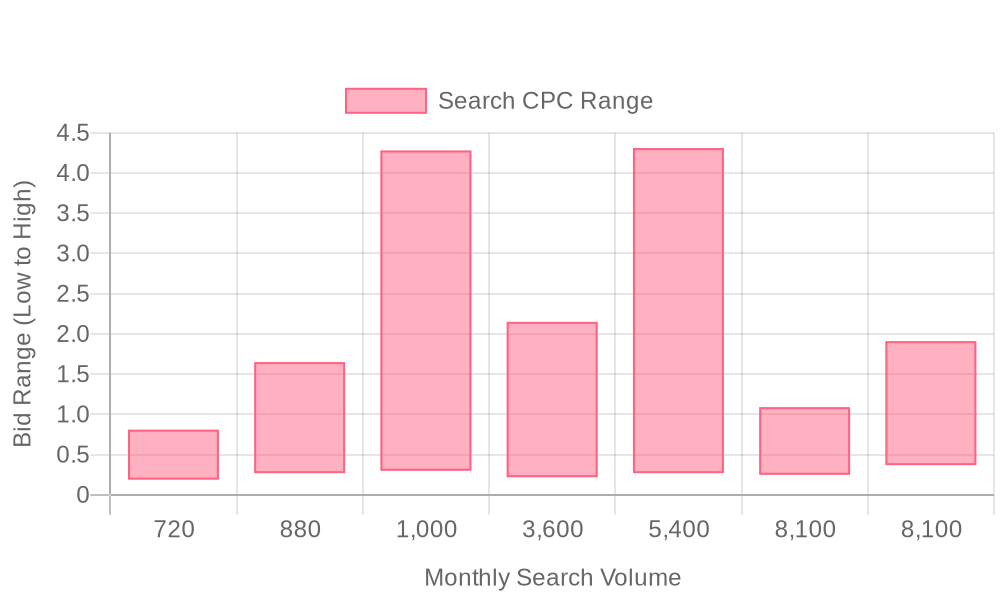
Supercharge your lead generation with a FREE Google Ads audit - no strings attached! See how you can generate more and higher quality leads
Get My Free Google Ads AuditFree consultation

No commitment
Supercharge your lead generation with a FREE LinkedIn Ads audit - no strings attached! See how you can generate more and higher quality leads
Get My Free Google Ads AuditFree consultation

No commitment
Supercharge your lead generation with a FREE Meta Ads audit - no strings attached! See how you can generate more and higher quality leads
Get My Free Google Ads AuditGet My Free LinkedIn Ads AuditGet My Free Meta Ads AuditFree consultation

No commitment
Supercharge your lead generation with a FREE Google Ads audit - no strings attached! See how you can generate more and higher quality leads
Get My Free Google Ads AuditFree consultation

No commitment
In the competitive landscape of manufactured home parts, capturing the attention of potential buyers presents significant challenges. High-intent prospects often begin their search without committing to a traditional form submission, leading some businesses to miss valuable opportunities. Google Ads offers a powerful platform to directly engage these prospects, ensuring your efforts target decision-makers effectively. This comprehensive guide explores how Google Ads can seamlessly integrate into your broader marketing strategy to turn digital presence into tangible sales outcomes, achieving substantial ROI in the manufactured home parts sector. Let's delve into maximizing the potential of Google Ads in your marketing efforts.

Today’s manufactured home parts industry faces a persistent challenge: high-value prospects often remain invisible in traditional lead tracking, leading to missed revenue opportunities and inefficient budget spend. Modern marketers need to leverage advanced technology to surface in-market buyers, create intent-driven campaigns, and capture prospects at the moment of need.
Integrating real-time data directly into Google Ads campaigns allows marketers to identify which visitors and companies are actively searching for manufactured home parts and related services. By connecting behavioral insights with advertising workflows, revenue teams can prioritize outreach to buyers showing genuine purchase intent, resulting in higher conversion rates and more efficient use of ad budgets.

The manufactured home parts sector requires a marketing approach that responds rapidly to both urgent and routine customer needs. Google Ads empowers brands to connect with qualified buyers at the exact moment they search for specialized parts, making every ad dollar work harder by targeting high-intent prospects.
Capturing high-value distributors and retailers demands more than basic targeting. Integrating search campaigns with intent-driven insights allows marketers to identify and prioritize prospects who show purchase-ready signals, ensuring outreach is efficient and relevant.
Timely engagement is essential in this industry, especially during peak demand for critical components. By synchronizing ads with real-time audience signals, brands can engage leads while interest is highest, reducing the risk of missed opportunities and preventing prospects from cooling off before conversion. For a comprehensive list of marketing tactics tailored for manufactured homes, explore these 22 ways to market manufactured homes.
For manufactured home parts suppliers looking to scale, geographic expansion is often hindered by the limitations of broad, generic advertising. Precise targeting in Google Ads enables strategic entry into new markets, focusing budget on the ZIP codes or regions with the highest concentration of mobile home communities and the strongest signals of in-market demand.
Immediate response to market fluctuations sets leaders apart. Predictive models integrated into ad platforms can prioritize leads most likely to convert, shifting budget and creative to maximize return on investment as market conditions evolve. By leveraging automated account research, teams can further streamline the identification of high-converting opportunities.
Finally, sales analytics become a revenue engine when Google Ads data is connected with CRM systems. Syncing conversion and engagement metrics across platforms creates a unified source of truth, enabling teams to refine campaigns, calculate true ROI, and build a cohesive strategy to boost sales performance. As marketing teams unify ad data with sales insights, they unlock previously hidden growth across the entire demand generation funnel.

Ready to optimize your manufactured home parts campaigns? Get started for free with Sona.

Digital marketers serving manufactured home parts suppliers need more than routine campaign management to outpace competitors. Unlocking sustained growth requires a data-driven approach to uncovering high-value audiences and intent signals that often go unnoticed in traditional strategies.
By aligning keyword targeting, competitive analysis, industry community monitoring, and dynamic retargeting, marketers in the manufactured home parts sector can consistently uncover new growth opportunities. The result is a campaign ecosystem that identifies, engages, and nurtures high-value prospects with greater precision and efficiency than traditional approaches. Ready to see how these strategies can work for you? Get started for free with Sona.

Audience segmentation is essential for unlocking higher engagement and more precise targeting in the manufactured home parts sector. By strategically grouping prospects according to buying intent and demographic profile, marketers can deliver tailored messages that resonate with both residential and commercial buyers. For more on actionable segmentation tactics, explore our playbooks for demand generation.
Leveraging visitor identification and advanced attribution, marketers can pinpoint high-value accounts and measure true ROI across both online and offline channels. This holistic approach to audience segmentation positions manufactured home parts vendors to maximize the effectiveness of their Google Ads campaigns, driving stronger engagement and measurable business growth. To see how you can apply these strategies, get started for free with Sona.

| Industry | Keyword | Monthly Search Volume | Competition Level | Low Bid | High Bid |
| Manufactured Home Parts | manufactured home parts | 720 | MEDIUM | 0.19 | 0.81 |
| Manufactured Home Parts | mobile home parts depot | 880 | HIGH | 0.27 | 1.65 |
| Manufactured Home Parts | mobile home siding panels | 1000 | HIGH | 0.3 | 4.28 |
| Manufactured Home Parts | mobile home skirting kits | 3600 | HIGH | 0.22 | 2.15 |
| Manufactured Home Parts | mobile home supply store | 5400 | LOW | 0.27 | 4.31 |
| Manufactured Home Parts | mobile home supplies | 8100 | HIGH | 0.25 | 1.09 |
| Manufactured Home Parts | mobile home parts near me | 8100 | MEDIUM | 0.37 | 1.91 |
A modern PPC advertising strategy for manufactured home parts starts with prioritizing keyword intent that signals buyers are prepared to act. Focusing on queries that show purchase readiness ensures marketing spend directly connects with prospects in-market, which reduces wasted impressions and untimely outreach. This approach is particularly effective in the manufactured home parts industry, where customers often search with urgent intent—such as immediate repairs or regulatory upgrades—making keyword selection critical to campaign ROI.
Long-tail keywords, such as "order replacement skirting for double wide" or "buy mobile home water heater valve near me," capture buyers with specific needs and a high likelihood of conversion. These precise phrases filter out cold, unqualified traffic, optimizing both click-through rates and cost-per-acquisition. Marketers can further refine targeting by layering local modifiers, ensuring campaigns reach prospects in defined service areas or communities. For example, including city or regional terms alongside product names ("mobile home door lock kit Phoenix") drives hyper-local relevance and aligns budgets to markets with proven demand. Explore more ways to optimize your PPC keyword strategy.
Negative keywords play a crucial role in protecting campaigns from wasted spend. Filtering out terms like "DIY," "free plans," or "mobile home decor" prevents budget from leaking into low-intent or irrelevant searches. With robust negative keyword lists, marketers maintain a tight focus on commercial traffic, reducing unproductive clicks and maximizing every dollar invested in Google Ads for manufactured home parts. For more tips, see this actionable playbook for demand generation.
Sophisticated revenue teams leverage unified data tools to go beyond anonymous clicks. By identifying high-intent visitors and recognizing repeat companies, marketers can dynamically adjust keyword bidding and ad creative based on real-time buyer behavior. As leads move through the funnel, dynamic audiences update automatically, ensuring that the most relevant, purchase-ready segments always receive the highest-priority messaging. When CRM data, enriched with offline and online actions, syncs seamlessly into Google Ads, budget naturally shifts toward the parts of the funnel generating the strongest ROI. This integration turns advanced keyword strategy into a measurable driver of pipeline and revenue growth for manufactured home parts suppliers. To see how this works in your own campaigns, get started for free with Sona.
Precision in keyword selection is essential in the manufactured home parts sector, where buyers often search using highly specific product names, dimensions, and urgent repair needs. Marketers should cluster keyword groups by component type, installation context, and location, using modifiers like “near me,” “replacement,” or SKU numbers to capture both local intent and transactional urgency. This targeted approach enables campaigns to surface ads for prospects actively seeking solutions, reducing wasted spend on generic home improvement terms. By integrating first-party data, teams can identify the actual companies or individuals behind high-value searches, refining keyword lists with deeper intent signals and ensuring budget is prioritized for audiences most likely to convert.
Dynamic keyword management is further enhanced by platforms that unify ad and CRM data, automatically updating lists as new service patterns emerge. When marketers sync enriched contact and account data with Google Ads, they unlock the ability to target clusters that reflect real-world demand, such as buyers who recently submitted service tickets or requested installation guides. For a comprehensive overview of 22 proven tactics tailored for this sector, explore manufactured home marketing strategies. This not only increases relevance but also ties ad impressions directly to sales pipeline activity, giving teams clarity on which search terms drive qualified leads across campaigns and regions.
Ad copy in the manufactured home parts industry must speak directly to the pain points of both contractors and homeowners, addressing the urgency of repairs and the complexity of part selection. Incorporating strong calls to action like “Order Now for Fast Delivery” or “Speak with a Parts Specialist Today” addresses the common frustration of delayed responses in this niche. Marketers should use dynamic ad elements that automatically insert product types, local stock availability, or even the specific community a prospect is searching from, ensuring that each ad is contextually tailored and relevant.
By leveraging real-time behavioral insights, revenue teams can shift creative messaging in response to in-market actions. For example, if a surge in searches for “winter skirting kits” is detected from a particular region, ad copy can pivot to highlight seasonal solutions and limited inventory. When CRM and ad platforms are integrated, teams can automate messaging updates based on lead status or past engagement, ensuring prospects always see the most timely, pain-point-driven offers as they move through the buying journey. To see how top-performing campaigns execute these tactics, watch this PPC ad strategies video tutorial.
Landing pages for manufactured home parts must maintain tight alignment with keyword intent and buyer stage, presenting clear value propositions and technical information up front. Each page should mirror the search query’s specificity, such as showcasing only “14x70 underbelly insulation kits” when that exact term was clicked. Visual breakdowns, compatibility charts, and installation videos reassure buyers about fit and ease of use, while trust signals like compliance badges and expert support increase conversion likelihood.
When visitor identification tools are in place, marketers can personalize landing page content based on the company or buyer segment, dynamically surfacing relevant case studies or bulk order discounts for contractors while offering DIY tips to homeowners. This data-driven approach shortens the research cycle and drives higher engagement rates, as every page element is tuned to the prospect’s known needs and purchase readiness. For more ideas on optimizing digital experiences for this audience, check out digital marketing strategies for manufactured home retailers.
Continuous optimization is crucial to maintaining high campaign ROI in this competitive market. Conversion metrics must be tracked at granular levels, from initial click to offline sales, using attribution models that connect ad spend to actual revenue outcomes. Predictive analytics can identify prospects trending toward purchase, allowing marketers to allocate more budget to high-intent audiences and pause spend on underperforming segments.
Smart bidding strategies, powered by unified ad and CRM data, enable revenue teams to automatically target and retarget the most valuable prospects as they progress through the funnel. Dynamic audience lists update in real time, ensuring that repeat visitors who show renewed intent receive tailored offers or upsell opportunities. For an in-depth look at successful e-commerce PPC optimization, read these ecommerce PPC management insights. Marketers who connect their ad platforms with sales and marketing systems can measure true ROI, attributing every conversion—whether online or from a sales call—back to the specific campaign and keyword that drove the lead, creating a closed loop that powers smarter decision-making and budget allocation.
Ready to apply a unified, data-driven approach to your campaigns? Get started for free with Sona.
Expanding market share in the manufactured home parts sector requires a data-driven approach that converts attention into lasting engagement. Revenue teams that leverage intent-based insights and actionable audience data consistently outperform those relying on intuition or static targeting.
By implementing these focused strategies, revenue teams in the manufactured home parts industry can expand their market presence, maximize campaign impact, and continuously adapt to shifting buyer behaviors. If you want to see how these strategies fit your business, get started for free with Sona.
Digital marketing for manufactured home parts demands a blend of technical precision and agile adaptation. Marketers who align every Google Ads touchpoint with purchase intent consistently outperform those relying on broad, undifferentiated campaigns.
By strategically embedding these practices, marketers in the manufactured home parts sector can capture high-intent audiences at critical purchase moments. This guide provides both core and advanced approaches for driving measurable growth, while the integration of real-time data insights and automated audience refinement lifts performance far beyond traditional PPC advertising tactics. To see how these strategies work in practice, get started for free with Sona and position your revenue team for long-term leadership in digital marketing for home parts.
As you venture into the world of advertising manufactured home parts through Google Ads, it's crucial to have a strategic approach that aligns with your business goals. Throughout this article, we've explored various tactics to refine your ad campaigns, from targeting the right audience to optimizing ad spend for maximum impact.
Navigating the complexities of Google Ads can be challenging, but with the right insights, you can effectively reach your target market. We've discussed the importance of selecting appropriate keywords, utilizing ad extensions, and employing data-driven strategies to enhance your campaign's performance. These steps not only improve visibility but also drive tangible results.
Imagine transforming your advertising efforts with a platform that offers seamless integration and actionable insights. By applying these strategies, you're well on your way to achieving a more focused and efficient ad campaign, which can significantly boost your outreach and conversion rates.
To take your advertising strategy to the next level, start for free and experience the capabilities of our platform today. Unlock the potential of your ad campaigns and witness firsthand the impact of a unified approach to go-to-market data.
Best practices include targeting high-intent keywords specific to manufactured home parts, using real-time data to identify and engage potential buyers, aligning landing pages and ad creatives for conversion, and continuously measuring campaign performance to refine and maximize ROI.
Optimize by integrating real-time data to identify active searchers, using precise keyword and audience targeting, aligning landing pages with ad messaging, and leveraging performance metrics for ongoing campaign optimization.
The budget should focus on high-intent keywords and precise audience segments, ensuring that each ad dollar targets prospects with immediate needs, thereby maximizing ROI and minimizing wasted spend.
Target keywords that reflect urgent purchase intent, such as specific product names, repair needs, and local modifiers, while using negative keywords to filter out low-intent searches.
Success can be measured by tracking conversion rates, using advanced conversion tracking to attribute revenue to specific keywords and channels, and integrating Google Ads data with CRM systems for a full view of campaign performance.
Join results-focused teams combining Sona Platform automation with advanced Google Ads strategies to scale lead generation

Connect your existing CRM

Free Account Enrichment

No setup fees
No commitment required

Free consultation

Get a custom Google Ads roadmap for your business
Join results-focused teams combining Sona Platform automation with advanced Meta Ads strategies to scale lead generation

Connect your existing CRM

Free Account Enrichment

No setup fees
No commitment required

Free consultation

Get a custom Google Ads roadmap for your business
Join results-focused teams combining Sona Platform automation with advanced LinkedIn Ads strategies to scale lead generation

Connect your existing CRM

Free Account Enrichment

No setup fees
No commitment required

Free consultation

Get a custom Google Ads roadmap for your business
Join results-focused teams using Sona Platform automation to activate unified sales and marketing data, maximize ROI on marketing investments, and drive measurable growth

Connect your existing CRM

Free Account Enrichment

No setup fees
No commitment required

Free consultation

Get a custom Google Ads roadmap for your business
Over 500+ auto detailing businesses trust our platform to grow their revenue
Join results-focused teams using Sona Platform automation to activate unified sales and marketing data, maximize ROI on marketing investments, and drive measurable growth

Connect your existing CRM

Free Account Enrichment

No setup fees
No commitment required

Free consultation

Get a custom Google Ads roadmap for your business
Over 500+ auto detailing businesses trust our platform to grow their revenue
Join results-focused teams using Sona Platform automation to activate unified sales and marketing data, maximize ROI on marketing investments, and drive measurable growth

Connect your existing CRM

Free Account Enrichment

No setup fees
No commitment required

Free consultation

Get a custom Google Ads roadmap for your business
Over 500+ auto detailing businesses trust our platform to grow their revenue
Our team of experts can implement your Google Ads campaigns, then show you how Sona helps you manage exceptional campaign performance and sales.
Schedule your FREE 15-minute strategy sessionOur team of experts can implement your Meta Ads campaigns, then show you how Sona helps you manage exceptional campaign performance and sales.
Schedule your FREE 15-minute strategy sessionOur team of experts can implement your LinkedIn Ads campaigns, then show you how Sona helps you manage exceptional campaign performance and sales.
Schedule your FREE 15-minute strategy sessionOur team of experts can help improve your demand generation strategy, and can show you how advanced attribution and data activation can help you realize more opportunities and improve sales performance.
Schedule your FREE 30-minute strategy sessionOur team of experts can help improve your demand generation strategy, and can show you how advanced attribution and data activation can help you realize more opportunities and improve sales performance.
Schedule your FREE 30-minute strategy sessionOur team of experts can help improve your demand generation strategy, and can show you how advanced attribution and data activation can help you realize more opportunities and improve sales performance.
Schedule your FREE 30-minute strategy sessionOur team of experts can help improve your demand generation strategy, and can show you how advanced attribution and data activation can help you realize more opportunities and improve sales performance.
Schedule your FREE 30-minute strategy session





Launch campaigns that generate qualified leads in 30 days or less.
